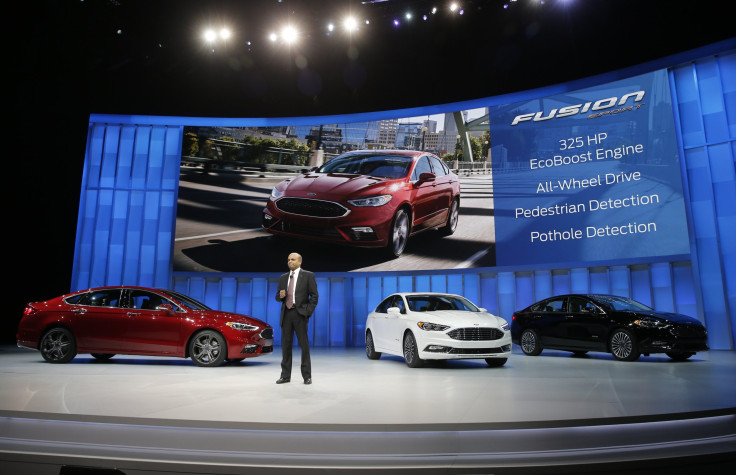Ford (F) Self-Driving Cars To Be Affordable, Commercially Available By 2025, CEO Says

Until a few years ago, cars that drove themselves seemed like the stuff of science fiction, but with the world’s biggest auto manufacturers and technology companies all taking a serious interest, the day doesn’t seem far off when we have fully autonomous cars that do not even have a way for their human passengers to take control. How soon such a day will come is anyone’s guess, but if you go by what Ford Motor Co. says, at least for itself, it will be in the middle of the next decade.
At Ford’s headquarters in Dearborn, Michigan, CEO Mark Fields told reporters Monday the company will produce, by 2021, a fleet of self-driving taxis for ride-hailing services and by “around mid-decade we’ll make vehicles available for people to purchase for themselves.”
Arguably the most advanced autonomous cars at present are made by Tesla Motors, owned by billionaire entrepreneur Elon Musk, but they are not cheap. Perhaps referring to them, Fields added: “ We’re dedicated to putting autonomous vehicles on the road for millions of people, not just those who can afford luxury cars.” And putting aside any rush to be the first to produce such a vehicle, the CEO of the 113-year-old company said: “We may not be first, but when we do come out with it, we want to make sure that it’s accessible to millions.”
On Monday, Ford gave the first public demonstration of its self-driving cars, Ford Fusion, which use lidar — a kind of radar that uses laser beams. According to Raj Nair, Ford’s chief for development of self-driving cars, and other engineers at Ford, lidar is a superior technology to radar because it scans a wide field of vision, compared to radar which looks forward.
Nair, who acknowledged that systems like Tesla’s Autopilot have prevented accidents, said current technology that relies on cameras and radar is “not to the safety level we [Ford] would be comfortable for introducing” into commercial production.
The lidar unit is supplied by Velodyne, a Silicon Valley company that Ford invested in earlier this year. At present, the system is big and bulky, sitting atop the cars’ roofs. Soon though, Velodyne is expected to produce the next generation of lidar units that will be much smaller.
Musk released an update for Tesla’s Autopilot on Sunday which makes radar the primary instrument for scanning the road, a task previously done by cameras. According to Musk, the update could have prevented a Model S crash in May that killed a Florida man.
Other companies working toward fully autonomous vehicles include ride-hailing service Uber, which has deployed its own sensing equipment in Ford’s Fusion cars and plans to trial its own driverless taxis in Pittsburgh soon; and Google, which could commercialize its self-driving cars by the end of the decade. A Singapore startup, NuTonomy, already started an autonomous taxi service last month.
© Copyright IBTimes 2024. All rights reserved.











